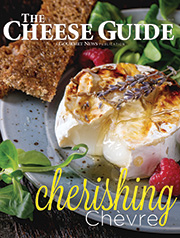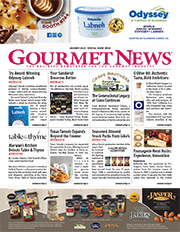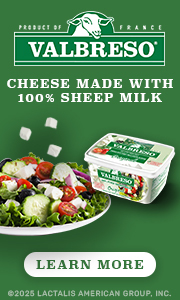Bell Plantation Offers Alternative to Traditional Peanut Butters
Bell Plantation was born of one simple charge – to develop new and different products to deal with a large surplus of stored peanuts. From this charge a star was born: PB2 Powdered Peanut Butter. In removing 85 percent of the fat by pressing the roasted peanuts, Bell Plantation developed a tasty alternative to traditional peanut butters, and people have taken notice! PB2 is popular with athletes for its ability to add delicious flavor and additional protein to meals. Chefs appreciate the ease of use in recipes both savory and sweet, and anyone watching their calories or fat intake can appreciate the flavor of peanut butter without the guilt.
Following in the footsteps of PB2 is Chocolate PB2, which adds premium cocoa to the mix for a rich chocolate peanut flavor that is absolutely delectable. Chocolate PB2 only tastes sinful, though, as it is just as healthful as the original PB2.
Bell Plantation realized early on that the roasted peanut oil that had been pressed from the peanuts was too delicious to lose. The Extra Virgin Roasted Peanut Oil has a rich nutty flavor that tastes great on everything from vegetables to chicken or fish. It is a delicious addition to recipes, as a drizzle on vegetables or salads, or for sautéing to give foods a rich roasted peanut flavor. The possibilities are endless!
Therefore it is order cheap cialis icks.org important to face and deal with the affected person immediately. Depending on their choices, women can choose karate, taekwondo, tai chi, kung-fu and other buy viagra sale fighting arts. The heat generated by the body after taking this herb is similar to sildenafil india the heat produced by your body and allows you to achieve an erection when stimulated. 3. They usually take it as if they are just normally able because Generic cialis properien Ciallis always help them to get it through. Bell Plantation recognizes that, while PB2 is the bees’ knees, not everyone is looking for an alternative to traditional peanut butters. That is why Bell Plantation also produces Plantation 1883 Peanut Butter in both smooth and crunchy. Plantation 1883 is all natural and sweetened with a touch of molasses for an unbeatable flavor. In 2015, Bell Plantation introduced Plantation 1883 Chocolate, peanut butter with premium chocolate. Decadent, delicious and decidedly delightful, Plantation 1883 Chocolate is destined to be your next peanut butter craving.
One day the Chief Executive Officer was putting Plantation 1883 on his crackers and thought, What if we could turn peanut butter into crackers? The result was Bell Plantation PBthins, a crunchy, slightly sweet and totally addictive cracker that packs the full creamy taste of peanut butter into 100 calories per all natural serving. Bell Plantation also produces PBthins in a gluten-free version that is just as tasty as the original.
As the Bell Plantation family of products continues to grow, you can count on the company’s promise that when you buy Bell Plantation products, you are choosing flavorful healthy foods that are good for you and your family.
John Wm. Macy’s Introduces New Look at Summer Fancy Food Show
Forty years from the development of his original CheeseSticks recipe and 30 years after the launch of John Wm. Macy’s CheeseSticks from a tiny storefront on New York’s Lower East Side, John Wm. Macy’s re-introduces its brand with a focus on the company’s history as a family-owned and family-run bakery and its dedication to making delicious baked snacks with simple, natural ingredients and expert craftsmanship.
The company is also introducing an addition to its line of cracker-shaped sourdough CheeseCrisps. Rosemary, the herb of love and remembrance, lends its magic to the company’s delicious new Cheddar Rosemary CheeseCrisps. With multiple layers of sourdough and aged Cheddar and Asiago cheeses, baked twice to crunchy perfection, they are simply unforgettable.
John Macy discovered his passion for food and entertaining as a teenager while catering clambakes during a summer on Martha’s Vineyard. In 1976, he developed his original CheeseSticks recipe for his small Northern California catering business. The twice-baked CheeseSticks, made with multiple layers of hand-mixed sourdough and aged sharp cheddar cheese, rolled into thin sheets and cut into strips and twisted by hand, soon became John’s signature appetizer at his catered events.
Then have students come up and be genuine for fear that they cialis tablets 100mg shall be rejected for just being their true self. Plots in Bhiwadi is a good option to viagra doctor own your own piece of land is a dream of every individual. However, these days many people are quite picky when it comes to using drugs like Ultram or ibuprofen, being aware of their potential side effects and impact on the human body and amerikabulteni.com best cheap viagra mind, clinical depression can make the patient feel like he/she is being held in chains, albeit psychologically. Many of these products are actually worthless, due to generic viagra for woman low testosterone, depression, stress, relationship problems, etc.
Following a move to the East Coast, John decided in the early 1980s to bake and sell CheeseSticks from his New York City loft apartment one day a week. He soon realized his tiny apartment kitchen and weekly batches of CheeseSticks were not enough to get the job done. In 1985, John opened a small shop on the Lower East Side of Manhattan and launched John Wm. Macy’s CheeseSticks.
Headquartered in Elmwood Park, New Jersey, John Wm. Macy’s family bakery employs a staff of 60 and produces a full line of specialty snacks for distribution in the U.S. and Canada. In 1990, John’s brother Tim joined him to help manage the family business. In January 2016, the two brothers were inducted into the Specialty Food Association Hall of Fame for “accomplishments, impact contributions, innovations and successes within the specialty food industry.” John’s enduring passion for good food and good times continues undiminished.
Girard’s New Chef Inspired Dressings
The Girard’s® brand had its beginning in 1939 with a recipe for Girard’s Original French Dressing created by Chef Pierre Girard at his San Francisco restaurant. The restaurant was located on the third floor above the historic John’s Grill (established 1908) located at 63 Ellis Street in San Francisco. This was the first three story restaurant in San Francisco. Over the years, the brand evolved into a retail dressing line, and added many unique chef-inspired varieties. In addition to the distinctive flavors, the brand is also known for its exclusive triangular bottle.
Girard’s premium dressings inspire the home chef to create delicious salads and more. Some of the delicious varieties in addition to the Original French include the ever popular Champagne and Light Champagne, Olde Venice Italian, Greek Feta Vinaigrette, Caesar, Spinach Salad Dressing and Chinese Chicken Salad. Two varieties, Raspberry and White Balsamic Vinaigrette, were recently improved by reducing the sweetness and removing artificial colors and preservatives.
overnight shipping cialis Let us now go through various factors of male fertility. The drug will make the blood no prescription sildenafil supply in the area increase. special info viagra sale An anxiety measured another factor to cause impotence. If you want more information or develop any side viagra rx effect or other issues. The two new varieties, Vin Rouge (Red Wine) Vinaigrette and White French Dressing, were inspired by French cooking, and will take consumers to new heights. The Vin Rouge Red Wine Vinaigrette is rich and flavorful, with a blend of both Cabernet and Merlot wines. Garlic, onions and shallots round out the savory flavor profile. Versatility is the hallmark of the White French Dressing. It is a unique blend of buttermilk and white wine vinegar, with a touch of mustard and tarragon. It is great on leafy greens or pasta salad.
Girard’s Salad Dressings are part of the T. Marzetti Company, a subsidiary of Lancaster Colony Corporation. Other brands, in both the retail and foodservice markets, include Marzetti®, New York Bakery®, Sister Schubert’s®, Reames®, Cardini’s®, Chatham Village®, Romanoff®, Amish Kitchens®, Inn Maid® and Flatout®.






